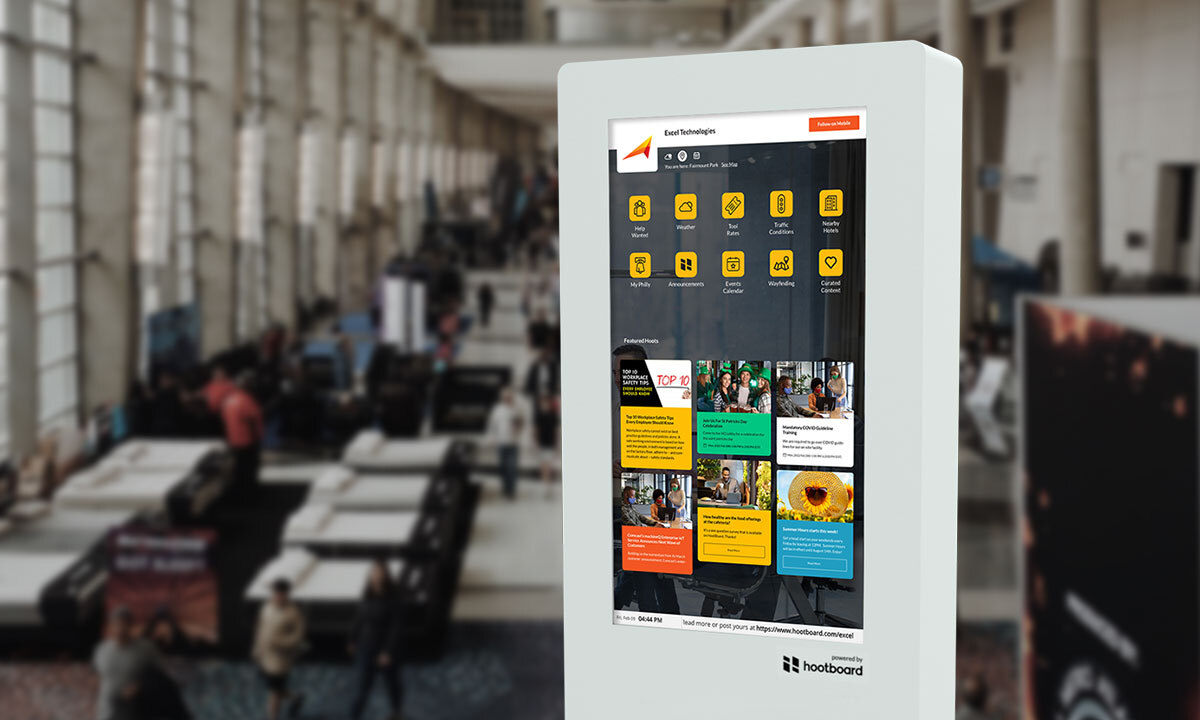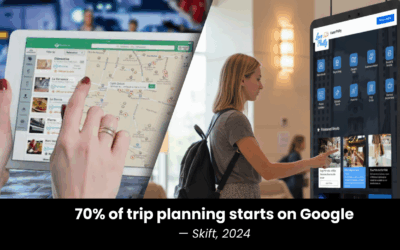The digital revolution has made its way into museums and parks, reshaping how visitors interact with these spaces. An instrumental part of this transformation is the adoption of digital kiosks. These technological tools offer a range of functionalities, from interactive exhibits to wayfinding assistance, significantly enhancing visitor experiences.
Interactive Exhibits
- Digital kiosks have reimagined the traditional museum exhibit, creating a more engaging and immersive experience.
- Visitors can now delve deeper into the content, watching videos, viewing additional images, and even playing games related to the exhibit.
For instance, The Smithsonian National Museum of Natural History in Washington, D.C. uses digital kiosks that allow visitors to virtually excavate dinosaur fossils, offering a hands-on learning experience that goes far beyond static displays.

Wayfinding Assistance
- Navigating large museums or sprawling parks can be daunting for visitors.
- Digital kiosks equipped with interactive maps and directories serve as virtual guides, helping visitors locate exhibits, amenities, and points of interest with ease.
Disneyland, for instance, has implemented digital kiosks throughout their parks, assisting visitors in locating attractions, finding restaurants, and even checking wait times for rides.
Enhanced Visitor Engagement
- Digital kiosks also provide avenues for enhanced visitor engagement.
- They often host interactive quizzes, puzzles, and challenges related to the exhibits or park attractions.
For example, the San Francisco Exploratorium uses digital kiosks for interactive science experiments. These experiments not only make learning fun but also encourage visitors to engage with the exhibits on a deeper level.

Benefits to Visitors
Interactive digital kiosks at museums and parks offer a multitude of advantages to both the visitors and the institutions themselves. For instance, Universal Studios uses digital kiosks to offer personalized recommendations based on visitors’ preferences, enhancing the overall park experience. Other ways they can be used include:
- Digital kiosks provide an enriching and personalized experience to visitors.
- They cater to different learning styles and preferences, making museums and parks more accessible and enjoyable for all.
- ADA Compliance: Kiosks can be designed with ADA (Americans with Disabilities Act) features, such as wheelchair-accessible height, screen-readers for visually impaired users, or captioning for those with hearing impairments. This ensures the venue is accessible to all visitors, regardless of their physical abilities.
- Promoting Vendors: Digital kiosks can serve as promotional platforms for vendors within the venue. They can display advertisements or special offers from on-site restaurants, gift shops, and more, thereby increasing visibility for these businesses and potentially boosting their sales.
- Real-Time Information: These kiosks can provide up-to-the-minute information, such as event schedules, weather updates, or emergency notifications. This enhances visitor safety and convenience, making for a smoother, more enjoyable experience.
- Improved Visitor Experience: The interactive nature of these kiosks can make visits more engaging and informative. Visitors can learn more about exhibits or park features at their own pace, enhancing their overall experience.
By incorporating interactive digital kiosks, institutions can significantly enhance the visitor experience while also realizing operational benefits.
Marketing Benefits
Digital kiosks are not only a tool for enhancing visitor experiences in museums and parks, but they also present a unique opportunity for marketers. By integrating modern technology, these kiosks can provide a dynamic platform for targeted marketing directly to visitors. Here’s how:
- Location-Based Marketing: Digital kiosks can deliver personalized promotions based on the visitor’s location within the venue. For example, if a visitor is near the museum cafe, the kiosk could display a special offer available at that cafe.
- Syncing with Mobile Devices: Through technologies like Bluetooth or QR codes, digital kiosks can sync up with visitors’ mobile devices. This could allow marketers to send tailored notifications, discounts, or information directly to the visitor’s phone.
- Data Collection: Kiosks can collect valuable data about visitor behavior and preferences. This data can be used to refine marketing strategies, personalize visitor experiences, and improve overall customer satisfaction.
- Interactive Advertisements: Kiosks can host interactive ads that engage visitors and encourage them to learn more about a product or service. This interactive element can make advertisements more memorable and effective.

Use Case for Marketers
Imagine a family visiting a large zoo. Upon entering, they approach a digital kiosk to get a map of the zoo. The kiosk asks if they would like to sync their mobile device for real-time updates and the family agrees.
As they walk around, the kiosk system tracks their location and sends relevant notifications to their phone. When they approach the lion exhibit, they receive a message about a lion feeding show starting in 10 minutes. Later, as they pass by the zoo restaurant, they get a notification about a lunch special.
Throughout the day, the kiosk system collects data about which exhibits the family visited, how long they spent at each one, and which notifications they responded to. This data is then analyzed to help the zoo refine its marketing strategies, personalize future visitor experiences, and improve overall customer satisfaction.
In this way, digital kiosks can serve as a powerful marketing tool, providing a personalized, engaging experience for visitors while collecting valuable data for marketers.
Conclusion
Digital kiosks in museums and parks are no longer a novelty but a necessity. They provide interactive exhibits, wayfinding assistance, and engaging visitor experiences, making each visit memorable and unique. As technology continues to evolve, we can only expect these digital tools to become even more integral to our museum and park visits.




